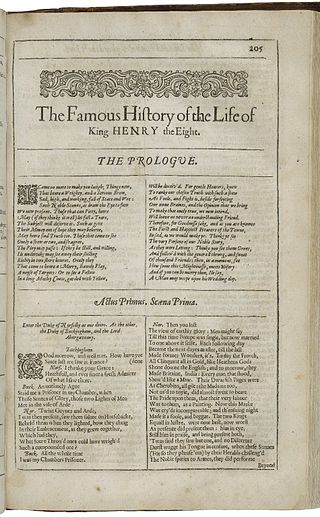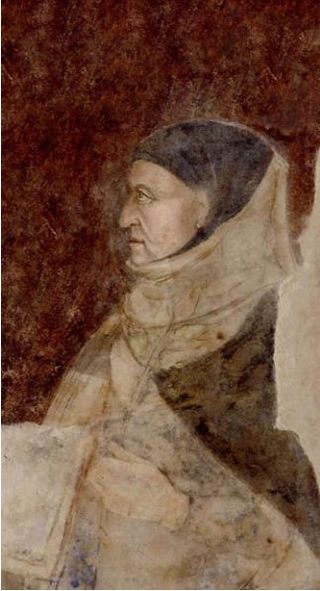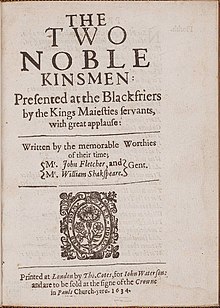
A Midsummer Night's Dream is a comedy play written by William Shakespeare in about 1595 or 1596. The play is set in Athens, and consists of several subplots that revolve around the marriage of Theseus and Hippolyta. One subplot involves a conflict among four Athenian lovers. Another follows a group of six amateur actors rehearsing the play which they are to perform before the wedding. Both groups find themselves in a forest inhabited by fairies who manipulate the humans and are engaged in their own domestic intrigue. The play is one of Shakespeare's most popular and is widely performed.

In Greek mythology, Hippolyta, or Hippolyte, was a daughter of Ares and Otrera, queen of the Amazons, and a sister of Antiope and Melanippe. She wore her father Ares' zoster, the Greek word found in the Iliad and elsewhere meaning "war belt". Some English translations prefer "girdle". Hippolyta figures prominently in the myths of both Heracles and Theseus. The myths about her are so varied it is thought that they may be about different women. The name Hippolyta translates as "she who unleashes the horses", deriving from two Greek roots meaning "horse" and "let loose".

Creon, is a figure in Greek mythology best known as the ruler of Thebes in the legend of Oedipus.

Sir William Davenant, also spelled D'Avenant, was an English poet and playwright. Along with Thomas Killigrew, Davenant was one of the rare figures in English Renaissance theatre whose career spanned both the Caroline and Restoration eras and who was active both before and after the English Civil War and during the Interregnum.
This article contains information about the literary events and publications of 1634.
This article contains information about the literary events and publications of 1613.

"The Knight's Tale" is the first tale from Geoffrey Chaucer's The Canterbury Tales.

Henry VIII is a collaborative history play, written by William Shakespeare and John Fletcher, based on the life of Henry VIII. An alternative title, All Is True, is recorded in contemporary documents, with the title Henry VIII not appearing until the play's publication in the First Folio of 1623. Stylistic evidence indicates that individual scenes were written by either Shakespeare or his collaborator and successor, John Fletcher. It is also somewhat characteristic of the late romances in its structure. It is noted for having more stage directions than any of Shakespeare's other plays.
The Birth of Merlin, or, The Child Hath Found his Father is a Jacobean play, probably written in whole or part by William Rowley. It was first performed in 1622 at the Curtain Theatre in Shoreditch. It contains a comic depiction of the birth of the fully grown Merlin to a country girl, and also features figures from Arthurian legend, including Uther Pendragon, Vortigern, and Aurelius Ambrosius.

Francis Beaumont was a dramatist in the English Renaissance theatre, most famous for his collaborations with John Fletcher.

John Fletcher was an English playwright. Following William Shakespeare as house playwright for the King's Men, he was among the most prolific and influential dramatists of his day; during his lifetime and in the Stuart Restoration, his fame rivalled Shakespeare's. Fletcher collaborated in writing plays, chiefly with Francis Beaumont or Philip Massinger, but also with Shakespeare and others. Although his reputation has subsequently declined, he remains an important transitional figure between the Elizabethan popular tradition and the popular drama of the Restoration.
Philostrate is a fictional character in a number of literary works, including William Shakespeare's A Midsummer Night's Dream (1596). In that play, he is the Master of the Revels at Theseus' court, meaning he is in charge of his lord's entertainments, making recommendations to Theseus, as well as altering the text of some of the plays performed in his court. Shakespeare may have used this character to poke fun at play censorship in London at the time. In early performances of the play, the actor who played this character probably also played the part of Egeus, Hermia's strict father. There is only one scene in act V where both Egeus and Philostrate are present, and in this scene Egeus' character would have taken all of Philostrate's lines as his own.
Like most playwrights of his period, William Shakespeare did not always write alone. A number of his surviving plays are collaborative, or were revised by others after their original composition, although the exact number is open to debate. Some of the following attributions, such as The Two Noble Kinsmen, have well-attested contemporary documentation; others, such as Titus Andronicus, are dependent on linguistic analysis by modern scholars; recent work on computer analysis of textual style has given reason to believe that parts of some of the plays ascribed to Shakespeare are actually by other writers.
The Lady Elizabeth's Men, or Princess Elizabeth's Men, was a company of actors in Jacobean London, formed under the patronage of King James I's daughter Princess Elizabeth. From 1618 on, the company was called The Queen of Bohemia's Men, after Elizabeth and her husband the Elector Palatine had their brief and disastrous flirtation with the crown of Bohemia.
The Masque of the Inner Temple and Gray's Inn, also known as, The Masque of the Olympic Knights, is an English masque created in the Jacobean period. It was written by Francis Beaumont and is known to have been performed on 20 February 1613 in the Banqueting House at Whitehall Palace, as part of the elaborate wedding festivities surrounding the marriage of Princess Elizabeth, the daughter of King James I, to Frederick V, Elector Palatine.
The bed trick is a plot device in traditional literature and folklore; it involves a substitution of one partner in the sex act with a third person. In the standard and most common form of the bed trick, a man goes to a sexual assignation with a certain woman, and without his knowledge that woman's place is taken by a substitute.

Teseida is a long epic poem written by Giovanni Boccaccio c.1340–41. Running to almost 10,000 lines divided into twelve books, its notional subject is the career and rule of the ancient Greek hero Theseus (Teseo), although the majority of the epic tells the story of the rivalry of Palemone and Arcita for the love of Emilia. It is the main source of "The Knight's Tale" in Geoffrey Chaucer's Canterbury Tales, and therefore is the original source of The Two Noble Kinsmen, a collaboration by William Shakespeare and John Fletcher. The exact sources of Boccaccio's knowledge about the ancient Greek world are unknown, but is likely that he gained the knowledge through his close friendship with Paolo de Perugia, a medieval collector of ancient myths and tales.
Palamon and Arcite (1566) is a play by Richard Edwardes, which was performed before Elizabeth I at Oxford. It is based on Chaucer's The Knight's Tale. Though the text of the play is lost, there is a detailed record of its structure and plot.
The Rivals is a 1664 comedy play by the English writer William Davenant. It is a reworking of The Two Noble Kinsmen by William Shakespeare and John Fletcher.











